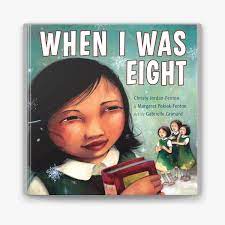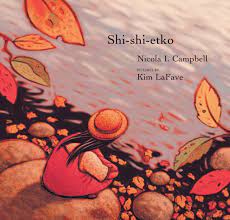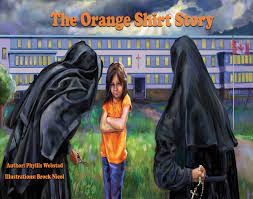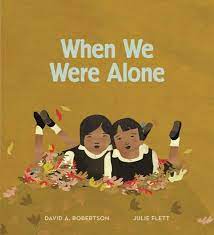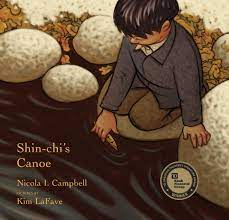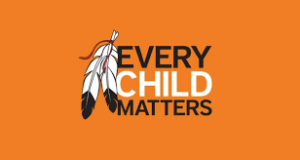My Final Digital Artifacts:https://www.symbaloo.com/shared/AAAACBe6ZHUAA42AhAK30w==
https://www.youtube.com/watch?v=hfd-uuOzBps&feature=youtu.be

The first link I embedded is a Symbaloo I created, which features, authentic Indigenous digital read alouds and interactive websites, all to support Orange Shirt Day. I thought it was extremely important to support my school and staff for this upcoming fall. Although I know that Indigenous content needs to be taught year round, residential schools and Orange Shirt Day were my focus for this inquiry project. I wanted to create a digital artifact and tool that could be used by staff and students and help to make the difficult and painful subject of Orange Shirt Day a little less overwhelming. The second link I provided is a screen cast of me navigating the Symbaloo and going through some of the resources.
How I started…
I was reading a book,”Genocidal Love” by Bevann Fox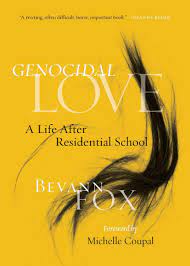 , while more news was coming out about children being found in residential schools. I was of course thinking about what I can do this fall to help my staff and students in regards to this news. At first, my inquiry was how can I use digital sources and resources to help support reconciliation? I was a little overwhelmed because there are so many sources out there. I began by creating a curation of digital books that focused on residential schools. They are all mostly picture books but could most definitely be used for ANY age. The books are fantastic and as mentioned before they are all authentic and mostly local, Indigenous books that will be very helpful to support Orange Shirt Day, or any day throughout the year.
, while more news was coming out about children being found in residential schools. I was of course thinking about what I can do this fall to help my staff and students in regards to this news. At first, my inquiry was how can I use digital sources and resources to help support reconciliation? I was a little overwhelmed because there are so many sources out there. I began by creating a curation of digital books that focused on residential schools. They are all mostly picture books but could most definitely be used for ANY age. The books are fantastic and as mentioned before they are all authentic and mostly local, Indigenous books that will be very helpful to support Orange Shirt Day, or any day throughout the year.
So I had a great list of curated books but thought that it needed something more. So then I began curating a list of interactive websites to help support inquiry and the list of books. Now I had all of my resources I wanted to share but I needed a platform to share them. I felt like if I were to email both lists out it would probably just get lost amongst all if the digital files my staff has stored on their computers.
Trying a new App
I was introduced to Symbaloo from a classmate. It seemed like the perfect tool to share all of my digital resources. Some of you may be asking, “what is a Symbaloo?” It is basically is a visual bookmarking tool that makes it simple and fun to organize the best of the web. You have all your favorite websites at your fingertips. With an account you can access your bookmarks from everywhere with any device and share your online resources with others. It is absolutely free to sign up (the paid version is ad-free) here is a link to sign up if you haven’t done so already: https://www.symbaloo.com/signup/start
I have learned throughout this course and program that as a TL it is our job to learn and teach all about new technology. This was my chance to try something new! So I created my Symbaloo mix. It was very user friendly. I even created another theme around digital tools for the classroom. I am very excited about this tool and hope to collaborate with staff in the fall on other themes and topics.
But it still was not quite right….
I still could not shake the feeling that if I emailed my Symbaloo and a hard copy of all the wonderful books and resources I had curated, it still might get lost in the mix. I could imagine that a lot of teachers and staff may have never heard of Symbaloo and the idea of learning about a new app at the beginning of what is sure to be a chaotic school year is crazy. How could I introduce them to these sources and at the same time demo a new app? That is when it was suggested to me to try doing a “Screencast”. At first I was very terrified to try yet another thing I have never done. I do not like hearing my voice in a recording. But, I realized that I need to get over myself and just give it a try.
Screencasting
So my incredibly resourceful teacher emailed out a google slide document that showcased how easy it is to do a screencast.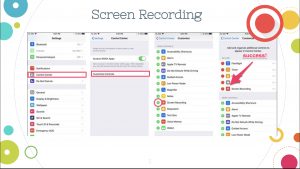 With a few touches of a button I was ready to record. It took me a few tries to get it right. But otherwise it was pretty seamless. I think I really just had to get over my own ego and the thought that this had to be perfect. I came to realize that a lot of digital resources I may create in the future may not be perfect either. But, as long as I am learning, growing, reflecting and serving my school, perfection is not the goal. I think there is a lot of pressure to be perfect because of the permanent nature of our digital footprint. But I will remember to balance it out with realistic expectations. Otherwise, I feel like I could get stuck rewriting and overthinking even the simplest post!
With a few touches of a button I was ready to record. It took me a few tries to get it right. But otherwise it was pretty seamless. I think I really just had to get over my own ego and the thought that this had to be perfect. I came to realize that a lot of digital resources I may create in the future may not be perfect either. But, as long as I am learning, growing, reflecting and serving my school, perfection is not the goal. I think there is a lot of pressure to be perfect because of the permanent nature of our digital footprint. But I will remember to balance it out with realistic expectations. Otherwise, I feel like I could get stuck rewriting and overthinking even the simplest post!
This Course
This course, my colleagues, my teacher and all of the previous blog posts really helped set me in the right direction, when it came to creating my digital artifact. I learned early on in this course the importance of inquiry based and digital learning opportunities. In the book, “Why School?” By Richardson, we see Minecraft as an example where digital learning could provide open ended inquiry learning. This book helped push me towards using digital sources and websites that were interactive. Like the example of Minecraft, I wanted to highlight skills such as: collaborating, self directing inquiry, problem solving, and integrating digital and multi media. In my previous blog posts I wanted to focus on digital resources to support Orange shirt day and this book and discussion with my peers definitely helped propel me there. I was also thinking a lot about collaborating and the need to build strong relationships. I think this led me to creating a Symbaloo because it is highly collaborative in nature. The app also allows the document to be changed and edited at anytime which is so important because information and perspectives are always evolving. I am very grateful for my time with this course and the people in it. I thank everyone for their time, energy and support!
Here is a link to my previous post which also contains my digital artifact and how to use it:https://blogs.ubc.ca/brittlovesbooks/2021/08/07/__trashed/
Best
Brittany
References:
Clarke, B. (n.d.). Orange Shirt Symbaloo. Retrieved August 7, 2021, from https://youtu.be/AoLmJi8YId8
Fox, B. (2020). Genocidal love: A life after residential school. Regina, Saskatchewan: University of Regina Press.
McNee, D. L. (n.d.). Tech4Learning: Making Thinking Visible with Apple Technology[Google Slides].
Richardson, Will. Why School?: How Education Must Change When Learning and Information Are Everywhere (Kindle Single) . TED Conferences. Kindle Edition.

